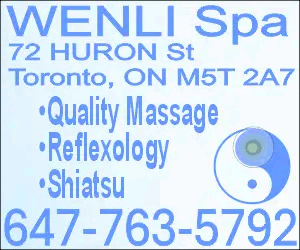
Photo Credit: Shutterstock
As runners, we churn miles out our legs, but how many of us make a conscious effort to ensure our muscles are prepped and cleaned up before and after throwing on those daily miles? Just as a skier waxes his skis or a cyclist tunes her bike, so too must runners make sure that their muscles are primed to perform without a hitch. If our muscle fibers are bound up, they won’t glide and hold how and where they should.
This is where massage becomes a vital tool for athletes. Therapeutic massage increases a runner’s range of motion, allows for quicker recovery due to increased blood flow, stimulates the digestion system and paves a path for better rest and recovery. It also increases the “happy” hormones of serotonin and dopamine while decreasing in the stress hormone cortisol.
But a good massage isn’t cheap, costing at least $75 per hour, so it’s often considered a luxury more than a necessity. Here are some self-massage tips you can put to work on yourself to help ward off aches and injuries or help a wound-up muscle unwind.
RELATED: 6 Injury-Reducing Exercises For Runners
Key Areas To Target
Fascia
First and foremost, address the muscle fascia (the saran-wrap-like tissue around our muscles and organs). By rolling with a foam roller, we are able to break up muscular knots that have developed from repetitive tear and repair of muscular micro-tears. The muscle can stretch more easily once we roll it to help release the grip of the muscle fascia. A wrinkle in the muscle fascia can tug on neighboring areas and create pain elsewhere. Consider the calf (gastrocnemius and soleus). If the fascia around the calf is bound up due to tightness, the fascia is going to tug on the plantar fascia and create issues that may get your attention first (thus throwing you off the initial culprit: tight calves). Those wrinkles with their strength of 2,000 psi can pull bones out of alignment, trap nerves and reduce muscle function length. Thus, rolling out the fascia can result in greater runner efficiency.
Glutes
As the saying goes, “Don’t get your panties in a wad.” The butt muscles are an intricate weave of key hip stabilizing muscles that, if allowed to get too tight, can make a mess of your hips. By sitting on a tennis or lacrosse ball (or using a foam roller or stick) and rolling over sensitive areas, you can help unlock areas that might be creating pain for you elsewhere. For example, if your piriformis muscle is tight, it can entrap the sciatic nerve. This entrapment can lead to pain and tingling (maybe numbness) down the hamstring or shooting pain in the pelvic floor. When rolling, be sure to work not only the soft tissue, but also along the edge of the sacrum and tailbone where muscles attach.
Calves
As stated earlier, tight calf muscles (gastroc and soleus) can lead to pain in the sole of the foot (plantar fasciitis). Using a stick or foam roller can be helpful in ironing out these muscles. In a relaxed position, try skin rolling the tissue to help loosen the fascial fabric in the area. Grab the skin loosely between your thumb and pointer and middle finger and roll.
RELATED: Understanding Foot Fractures And How To Treat Them
Shins
Tightness in the peroneal muscles (connecting the lower outside calf muscles to the outside of the foot) can result in pain in the sole of the foot. A tight tibialis anterior (the fleshy part to the outside of the shin bone) can be attributed to shin splint pain. Rolling these out with a stick or iced paper cups can help decrease inflammation. A tight tib-anterior can create knee pain so be sure to roll or use cross-fiber friction at its insertion point just medial to the outside of the knee.
Feet
Roll your foot fascia out with a golf ball, a frozen water bottle, or a sock with marbles knotted on the end. You can obviously also use your fingers to dig into the tissue, or if you want more pressure, consider using a small knob for a dresser or the back of a small kitchen melon scooper.
Quads/IT-Band/Hamstrings
The upper leg area is probably the area we remember best to self-massage. Be sure when rolling out the IT band to roll to its attachments: top of hip bone to outside of knee). When rolling out the hamstring, be sure to roll and even pause at the top where it attaches to your sit bone (ischial tuberosity).
RELATED: Understanding Trochanteric Bursitis Chronic Hip Pain
How Much Pressure?
We all know too much of a good thing can be bad for you. The same goes for self-massage. You may think that since you are in charge, you can withstand more pressure and for a longer period of time. It’s recommended, however, to self-massage an area for no more than 2 minutes at a time. Read the tissue: if it becomes red and warm, it’s time to stop. Be sure to stretch after massaging/rolling the area to reap the benefits of a loosened muscle. For example, after rolling out the IT band, stretch the quads. Familiarize yourself with your muscle weaknesses and be sure to do simple exercises to engage those muscles; while you may have ironed out the tight tissue, you shouldn’t neglect the (potentially opposing) muscles that need to be reminded to fire.
****
About The Author:
Amanda McCracken, C.M.T., is a massage therapist, running coach and a 17:47 5K runner based in Boulder, Colo.
Let's block ads! (Why?)









































































































